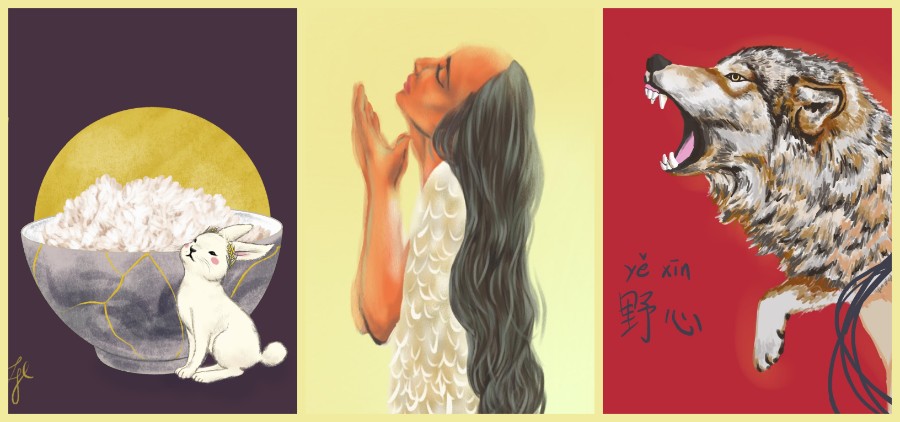Global feminism is on the rise and unfortunately, so is the backlash against it – Qing Na looks at how the works of Frankie Huang depict this movement…
While feminists in Ireland were celebrating their victory in the 2018 abortion referendum, the world’s most powerful man, Donald Trump, has threatened the reproductive rights of women in developing countries by removing US funding to overseas organisations that offer abortions. Meanwhile in China, there is a regime where feminist voices are silenced while movements are crushed by detaining activists.
The backlash is painful; but even in a country like China, feminist movements have never stopped progressing in spite of the fact that intense crackdown and stereotypes towards women are being challenged, and that status quo is deemed to be under threat. Given that China is a country where public campaigns or protests would not be tolerated by the state and that social media is under tight censorship, there is a battle of words, intelligence and arts that translate between the two.

China seems to largely be absent from the global Me Too movement, but – thanks to the government’s internet censorship – Chinese activists are communicating with the rest of the world with wordplay, such as replacing original words with homophones to evade censors. However, as control on the internet becomes harsher, changing words is not enough. Pictures, therefore, are involved and have been an important tool to keep the public updated on sensitive topics and to provide a better translation of Chinese words to the world’s audience.
“Loss is an unavoidable aspect of translation…more often than not, a lot of embedded meaning and context is lost in the process of translation,” says Frankie Huang, a Chinese-American feminist and illustrator.
For example, rice (米 Mi), bunny (兔 Tu) and pictures of the two objects have become the most popular alternatives to describing the Me Too movement circulating on Chinese social media. In a piece where Rice Bunny was originally painted as a greeting on China’s mid-Autumn festival, Huang wants to send the message to young girls about equality and self-worth through potent feminine symbols in China like the moon and rabbits.

Crane Wife (鹤女纺) is a piece inspired by folklore depicting a crane who has turned into a woman and married a lonely sail-maker. She exhausted herself making sails by picking out her own feathers for her husband to sell. “As a girl, this story was just a standard magical fairy tale for women. But as I got older, it became a parable for toxic, imbalanced relationships endemic in women’s lives,” says Huang.
By combining a woman’s head and hands, along with feathers and claws, she wanted to depict a typical role for women and to capture the strangeness and universality of a traditional relationship between men and women.

If saying Rice Bunny and Crane Wife are symbols of awakening feminists in oriental culture, Ambition (野心), which literally translates to “wild heart”, is an implication of a rising power and will of rebellion among women in today’s Chinese society. Depicting a naked, screaming woman with a giant wolf bursting out of her chest, it shows women as an untamed and wild force.
“Ambition has become a positive trait in China in recent years, but the word has always carried some negative connotations, perhaps because the word “wild” (野) is the opposite of polite and civilised,” says the illustrator, “but I love the idea of a powerful, untameable woman taking on this world which often has everything rigged against women.”

Attitudes towards sexual orientation in Chinese society have also evolved with the rise of feminism. By drawing two figures intertwining together without indicating their sex, Huang wanted to underline the fact that marriage, which is 结婚 (jie hun) in Chinese, can be egalitarian and ungendered. The character of 结 (jie), which means “knot”, is emphasised to show a close connection between two people and 婚 (hun), the Chinese word for marriage, contains a female radical to challenge heteronormativity.
Through visual aid facilitated by the understanding of both Chinese and English, Huang defines the undefined by illustrating words that have a visual identity that is not overly abstract but open to interpretations. Going against conventional concepts, she also wants to be free from the patriarchal traditions in Chinese culture and to allow her feminist perspective to come fruition.
“I want to depict women as nuanced, complex and human,” says Huang. “It’s important to me to depict their strength and courage, but I’m not interested in showing how women are better than men…I want their humanity to be accepted as the norm, rather than their feminine tropes that women are shoved into.”
By Qing Na


